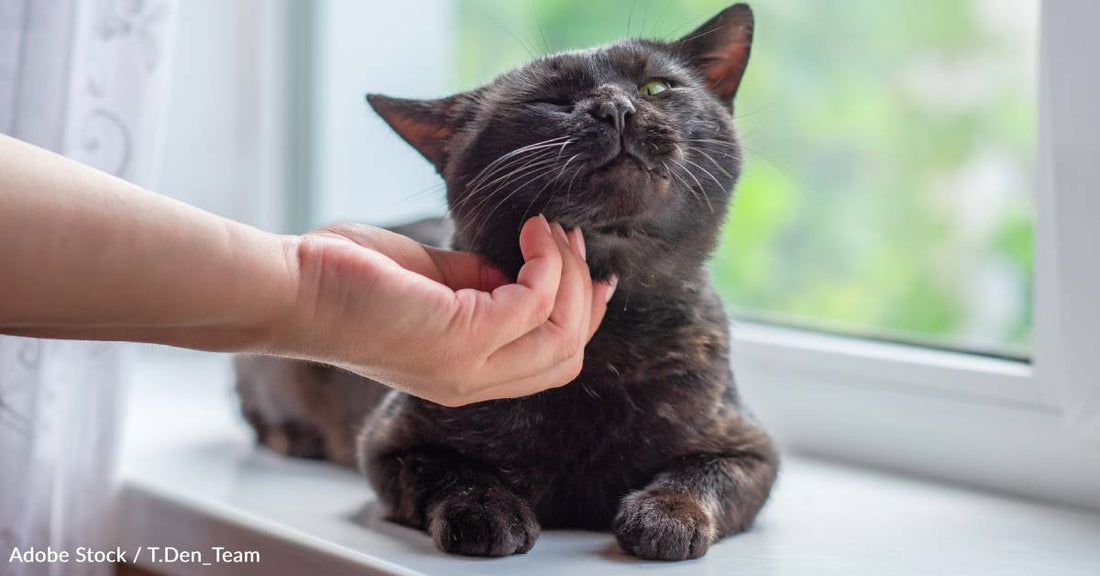From Wild to Mostly Cuddly: How Cats Were Domesticated
Michelle Milliken
Late October features many people’s favorite holiday. Not Halloween. National Cat Day! National Cat Day is observed on October 29. It celebrates our feline friends but also reminds us that many still need forever homes. In honor of the occasion, learn more about how cats found homes with humans in the first place... and how you can help those still waiting in shelters.
Early Domestication
Today’s domestic cats descended from a North African wildcat species known as Felis silvestris lybica. These forebears first started popping up around human settlements in the Fertile Crescent 10,000 to 12,000 years ago. They were likely drawn to these early agricultural settlements due to something else that was drawn to them: Mice.

It’s believed that wildcats served as pest control, which helped protect grains. Since the relationship would have benefitted the people growing these crops, they’d be more than happy for cats to give them a hand, or paw. Being around people helped these cats snack on human scraps, too, giving them several forms of reliable food sources.
There were other wildcats around the world at the time, but Felis silvestris lybica was the lucky species that happened to be in the closest proximity to early civilization. However, according to archaeological data, one of the other types of wildcats was found more than 5,000 years ago near millet farms in China, likely providing the same services. There is evidence that some of these wildcats may have even been fed by people.
Getting Friendlier With Humans
As these older, wilder cats became more attached to settlements, they began dispersing to other areas, likely taken aboard ships to provide pest control, which they were able to continue to do at the ship’s destination. They spread across the Roman Empire in this way. This type of arrangement also happened as European settlers came to the Americas. There’s plenty of evidence that they were taking on more of a pet nature quite some time before that, though.

One of the earliest pieces of evidence involves a 9,500-year-old grave in Cyprus, in which a cat was found buried near a person who was surrounded by other items that may have had significance to the deceased. As wildcats weren’t native to the island, this would have been another destination to which the animals were brought.
When people think of the worshippable nature of cats, the internet is one thing that comes to mind. The other is the ancient Egyptians. Cats were a big part of their society. Egyptian art and writing from more than 3,500 years ago show felines had a role in family life. They were also often mummified, and the goddess Bastet had a cat head.
Cats also later took on roles religiously in other ways, protecting houses of worship and manuscripts from rodents.
Rough Go in the Middle Ages and Renaissance
While cats may have given churches a paw, and there are even cat doors in churches hundreds of years old, religious stigma did also cause a dip in their popularity for a while. By the 14th century, and intensifying during the witch trials that lasted into the 17th century, cats were often associated with the devil and witchcraft. Some people thought them to be “familiars.”

This did lead to persecution in some circles, but the hysteria died away by the time the 18th century rolled around. Within 100 years or so, sentiments started shifting more toward what we see today.
Cats as Pets in Recent History
At some point in the 19th century, cats as actual pets became much more common, and selective breeding really began. This paved the way for the 73 breeds currently recognized by The International Cat Association. It also further diversified coat colors, as all early wildcats had tabby-like camouflage for safety from predators and more successful hunts.

Back in the 19th century, and even well into the 20th, pet cats were still mostly kept outdoors, though. With the advent of cat litter in the mid-20th century, as well as specialized cat food, they started moving into our homes and taking over our beds. They also started being recognized as supportive companions that provide health benefits, including cognitive, heart, and mental health boosts.
Cats As Pets Today
These days, cats are enhancing the health of a lot of people all across the globe. Estimates of house cat populations worldwide vary, but they at least number more than 200 million. They’re especially popular in the United States, where 46.5 million households have cats. Most American cat owners also say their feline friends are a member of the family.

Cats these days may be more apt to sneak into our cupboards to chow down on human snacks, versus defending them against rodents, so they’ve come a long way.
Research also shows that about 40% of American cat owners got their feline friends from a shelter or rescue. Unfortunately, there are still quite a few kitties waiting for homes at those rescues as we speak. If you’re unable to take another home yourself, consider marking National Cat Day by supplying a care package for a shelter cat in the meantime. To do so, click below!

